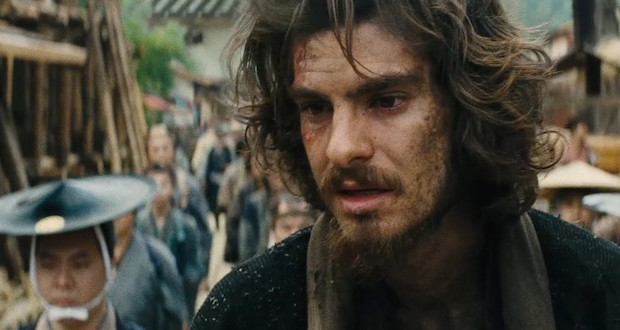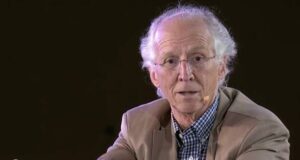Martin Scorsese is one of the great auteurists of our time. From Oscar winning films like Taxi Driver (1976) and The Wolf of Wall Street (2013), no one questions Scorsese’s repertoire for great filmmaking and, in some instances, controversy. Readers may remember the fall-out over Scorsese’s last religious film–”The Last Temptation of Christ”.
In his newest venture and self-described long-time passion project, he approaches faith as someone in the twilight of their life. Perhaps through introspection, Scorsese here honestly explores both the cost of denial and proclaiming one’s faith and why God can seem “silent” in the suffering of His followers. He dives head-first into these issues against the background of the horrific religious cleansing of Japanese Catholic converts that took place starting in the 1600s. The result was the decimation of a Christian population that numbered some 300,000 in 1630 to a scattering of a few hundred forced into diaspora by 1830.
Silence, based off a 1966 novel of the same name by Shūsaku Endo, follows two Jesuit priests from Portugal– Rodrigues played by Andrew Garfield (The Amazing Spiderman, 2012, Hacksaw Ridge, 2016) and Garrpe played by Adam Driver (Star Wars: The Force Awakens, 2015), on their mission to locate and save their friend and mentor Ferreira (Liam Neeson: Taken, 2008), Schindler’s List, 1993) whom the cardinal fears has apostatized (denied the Church’s teaching). They complete the two-year journey from Portugal and sneak into Japan from China just as Japan has entered the tail end of their great inquisition of all Catholic priests and followers of Christ after the Shimabara Rebellion. The film does not explore the reasons for this inquisition though it is inferred that Japanese authorities
believe Christianity poses a threat to Japan’s isolated and xenophobic culture. Many metaphors are scattered through the cinematic masterpiece showing us the insights of the Japanese mindset and their own Buddhist religion. This creates great obstacles for the two priests. They, like the Christian converts, are forced to hide, pray and worship under the cover of darkness. The movie does a superb job of showing the struggle of these Christians and rarely has Christian faith and sacrifice been shown with such great passion and authenticity.
The film is filled with examples of what it means to believe, worship and survive in the face of insurmountable persecution. In a recent interview Scorsese said the film was a meditation on the spiritual reflex. Reflex we assume to persecution, doubt and death all of which are exemplified in the film. “It does exist. So how do we nurture it?” he asks.
Rodrigues often asks himself if he is worthy to serve God. With apostasy under torture as the ever-looming fear of the two men, they must find a way to survive and teach their passionate flock. Garfield and Driver both give excellent performances of young Jesuits full of energy with a sincere struggle to understand Japan and its Christians. Their passion for justice and young questioning minds are something that many young people today can identify.
With Silence, filmgoers will find it to be more than a religious epic. Though it is epic. Many critics point to the film as one of Scorsese’s finest achievements and others credit it with being one of the best religious films of the past decade. And though while covering events associated with the Catholic missions to Japan, the theme echoes for believers everywhere, especially in light of Christian communities under threat even today around the world with hundreds of thousands of believers fleeing their homelands in the face of ISIS and civil war.
Silence poses questions about one’s own moral identity and causes you to really think about what you are witnessing. This is a part of Christian history unknown to most except for college professors and studied Catholics. As such, it employs voiceovers to help guide the viewer as to the context of what is being shown. It needs every bit of its two hours and forty minute length and throughout the film demands the attention of the viewer.
The film ponders what it means to serve the church in a place that is culturally and spiritually utterly hostile to the Gospel. The unadulterated sharing of that Gospel portrayed in Silence means it almost didn’t get made in secular Hollywood. Scorsese found it difficult to find a movie studio to fund it and several A-list actors turned it down. While Hollywood scorned his efforts, Scorsese seems to have arrived at a place in his spirituality where his Catholic upbringing and heritage was something to be lauded, not questioned as he did in his earlier films. Silence may be seen as a sort of personal penance.
Responding to critics for making such an overtly Christian film, Scorsese told the Hollywood Reporter, “There is nothing really to hide. That is who I am. I can’t be what’s fashionable. I’m 74, this is it, and it has value. Somehow the film was interwoven with my personal life like no other picture”.
So, from the director of a film (Last Temptation) that so many in the faith community derided, comes Silence which they can now celebrate and recommend wholeheartedly.
–By Mason Potter | Metro Voice
 Metro Voice News Celebrating Faith, Family & Community
Metro Voice News Celebrating Faith, Family & Community 









